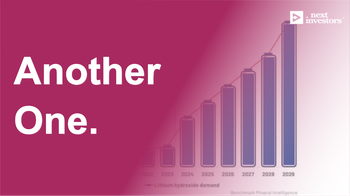With phosphate prices rising sharply in 2021-22, we expect the upcoming DFS to show improved project economics and eventually re-rate the share price.
Opened: 11-Mar-2022
Closed: 19-Dec-2022
Shares Held at Open: 4,895,000
Shares Held at Close: 8,645,000
Reason Memo Closed: Highly Material Announcement - Energy MoU signed with Angolan power network for green hydrogen/ammonia project
What does MNB do?
Minbos Resources (ASX: MNB) is sitting on a large phosphate resource in Angola that has the potential to dramatically transform the country’s food security and crop yields.
Phosphate is a key ingredient in fertiliser, and MNB will mine the raw phosphate rock, then truck it to a major Angolan port via existing infrastructure.
At the port, it will be enhanced and sold as a blended product to agricultural distribution networks across the country.
What is the macro theme?
Fertilizer prices rose sharply in 2021 and food security is a major issue as supply chains get squeezed in the pandemic. In a broad-based commodities supercycle, phosphate prices are poised to go higher.
[Memo Assessment - 19-Dec-2022]: Grade = A
Fertiliser and phosphate prices have continued to rise through 2022 with food security an ongoing global issue.
Our Big Bet for MNB
![]()
MNB delivers a 10x return by building a profitable phosphate project AND progressing its green ammonia project.
Why did we invest in MNB?
Phosphate prices rising means better DFS
With phosphate prices rising sharply in 2021-22, we expect the upcoming DFS to show improved project economics and eventually re-rate the share price.
[Memo Assessment - 19-Dec-2022]: Grade = B
The DFS showed higher projected project NPV at current spot prices. Rising fertiliser prices helped to improve projected project economics, but given rising inflation, CAPEX figures were also higher than forecast in the earlier Scoping Study (this is the case for every revised DFS we have seen in the last 12 months)
Delivery of the DFS did not markedly re-rate the MNB share price higher, much of which may be attributed to poor wider market sentiment for speculative investments.
Mine construction
The potential for MNB to begin mine construction in late 2022 is a big drawcard. We think that construction commencing would signal to the markets that MNB have gone from explorer to producer which could lead to the market valuing MNB as a far less risky and more established company.
[Memo Assessment - 19-Dec-2022]: Grade = B
Mine construction had actually commenced in early-2022, and while this does help in derisking the project, it has not carried over to the company’s market valuation.
Green ammonia optionality
MNB has recently committed to exploring green ammonia production potential in Angola utilising the ample access to cheap hydro power.
[Memo Assessment - 19-Dec-2022]: Grade = A
A technical study (the basis for a Scoping Study) has commenced and is expected to be completed in six months from September 2022.
Angola’s electricity network operator, RNT-EP, confirmed its support for a long-term hydro-electricity offtake agreement which would ensure crucial cheap and green electricity supply - a key reason for us calling MNB our Wise Owl Pick of the Year.
What do we expect MNB to deliver?
Objective #1: Definitive Feasibility Study and Project Financing
We want to see MNB deliver the DFS to better understand the economics of the project and help move MNB into the financing phase
[Memo Assessment - 19-Dec-2022]: Grade = A
The DFS has been delivered. It forecast strong margins with a significant immediate-term sales opportunity. It estimated a project post-tax NPV of US$203M (base case) to US$400M (at current fertiliser prices) at MNB’s 85% ownership.
This compares to MNB’s market cap of just $58M and is an increase on the NPV of US$159-US$260M in the August 2021 Scoping Study.
Objective #2: Plant Construction and first production
[Memo Assessment - 19-Dec-2022]: Grade = B
While construction has commenced, first production is now anticipated late-2023, having been pushed back from mid-2022 as was previously anticipated.
MNB still requires fInal environmental approvals for the project.
Seeing first production in 2022 was a long shot, which was reflected in our language on the second point above.
Objective #3: Offtake Agreements or supply MoUs
[Memo Assessment - 19-Dec-2022]: Grade = C
We await news of offtake agreements and MoUs, but with the phosphate project DFS in hand, MNB is in a much stronger position to sign some deals.
The signing of these deals has now been pushed into our new MNB Investment Memo #2
We gave MNB a “C” grade on this objective however, because it indirectly made progress by bringing on some interesting investors in its last cap raise who are also potential offtakers.
A $15M cornerstone investment into MNB in July was from a syndicate of investors led by the chairman of the world’s largest battery anode producer.
The syndicate is led by Hong Kong based Mr Liang Feng who is also founder and chairman of Shanghai listed “Shanghai Putailai New Energy Technology” which has a market cap of US$18 billion and is the world’s largest anode materials maker for lithium batteries.
In China, lithium-iron-phosphate batteries make up 44% of EV’s, hence the interest from this group in a large stake of MNB’s future phosphate mine.
Objective #4: Green Ammonia progress
We want to see MNB make some more progress with respect to outlining its Green Ammonia strategy. As part of this process we want to see MNB make progress with the sourcing of renewable energy power and to sign technology partnerships for the development of the plant.
[Memo Assessment - 19-Dec-2022]: Grade = B
MNB signed strategic cooperation agreement with a syndicate of investors, Longmarch - led by Hong Kong based Mr Liang Feng - for its green ammonia/hydrogen project to:
- Investigate the availability of hydropower for new green ammonia projects.
- Evaluate/develop potential downstream ammonia products.
- Complete feasibility studies on a large-scale ammonia project.
- Secure financing to fund construction of production facilities and help securing a suitable site
- Secure customers and offtake arrangements for the ammonia products
What could go wrong?
Geographic risk
Whilst MNB has strong government support, there is always a risk of geopolitical instability in this part of Africa. There have been four coups in the last 4 years in the West Africa region. Geopolitical risks form a significant part of MNB’s overall risk profile.
[Memo Assessment - 19-Dec-2022]: Risk = Unchanged
This risk remains, however MNB has made progress in further developing positive relationships with the Angolan government, particularly in regard to securing hydro-electric power for its green ammonia project.
Funding risk
MNB’s project is located in Angola which may make it difficult to attract financing with investors thinking the geopolitical risk is too high to make large CAPEX investments in the country. MNB is approaching a juncture where it will need to look to raise the full upfront CAPEX required to put its project into production which means this is another big part of the risk profile when investing in MNB.
[Memo Assessment - 19-Dec-2022]: Grade = B
The cost to complete construction of the phosphate project was US$52.6M, but with work already underway the remaining CAPEX is US$48.5M.
Of this, MNB requires further funding of US$40M to complete project construction and provide initial working capital.
MNB’s June share Placement (to raise $25M) was paired with a non-binding debt term sheet for a further US$25 million which it may opt to utilise.
While the DFS will certainly help in attracting and securing financing, the geopolitical risk remains a constant.
Commodity pricing
Fertiliser prices could impact the economic viability of MNB’s project. MNB will also need to produce the fertiliser at a low cost to be able to attract interest from domestic purchasers who have for a long time avoided the usage of fertiliser due to affordability issues.
[Memo Assessment - 19-Dec-2022]: Grade = A
Fertiliser prices were trading at record highs in 2022. MNB’s phosphate project is highly leveraged to fertiliser prices. For this reason the project NPV estimate of US$400M using current phosphate prices is around double the base case NPV estimate of US$203M calculated using historical phosphate prices.
As for farmers facing increasing costs of fertilisers, the simultaneous food inflation does offset their higher costs, meaning demand for fertilisers should continue.
Building costs inflation
With construction costs globally increasing significantly over the last 12-24 months, MNB is at risk of being exposed to large cost overruns as it gets closer towards putting its project into development. Cost inflation may also impact project economics.
[Memo Assessment - 19-Dec-2022]: Grade = B
CAPEX estimates were increased in the DFS (to US$52.6M complete construction capital cost) above those in the earlier scoping study (up from US$22.4–27.9M). We assume that at least part of this increase is related to higher building materials costs. This cost inflation was signalled by MNB management ahead of the release of the DFS so were anticipated.
Yet as building costs inflation goes hand in hand with commodity price and fertiliser price inflation, MNB’s forecast margins remain high.
We note that the DFS was completed during a time of extremely high short term inflation, so would be surprised if CAPEX remains as high as indicated.
Also since the DFS, MNB has said that simplifying the phosphate flowsheet would deliver “significant CAPEX savings”.
What is our investment plan?
We have been invested in MNB since August 2020, and in that time they have delivered many key milestones and the share price has experienced two sustained re-ratings.
MNB has been a very successful investment for us so far - we have a free carried position going into the construct and production phase per our plan with all our investments, and we expect further re-rates
Our plan is to hold our position into first production, if the share price nears our 1000% gain target we will likely sell another 20% of our position to take some profit.
[Memo Assessment - 19-Dec-2022]: Grade = B
We executed a Top Slice (sell to de-risk position) in the first part of 2022, and also increased our Investment as part of the 11 cent capital raise in July.
Disclosure: The authors of this article and owners of Next Investors, S3 Consortium Pty Ltd, and associated entities, own 4,895,000 MNB shares at the time of publication and 1,562,500 MNB options. S3 Consortium Pty Ltd has been engaged by MNB to share our commentary on the progress of our investment in MNB over time.
Opened: 19-Dec-2022
Shares Held at Open: 8,644,973
What does MNB do?
Minbos Resources (ASX: MNB) is seeking to build high-margin phosphate fertiliser supply business with the potential to dramatically transform Angola’s food security and crop yields.
MNB is also seeking to develop a green hydrogen/ammonia business powered by cheap hydro-electric power that would cut the reliance on natural gas in producing ammonia, also located in Angola.
What is the macro theme?
MNB is targeting phosphate production for fertilisers, as well as green ammonia for use in fertilisers and in explosives.
These two products each have strong tailwinds supporting high prices and ongoing demand. Fertiliser prices are at near record highs and food security is an increasingly important global issue.
Angola is a potential agricultural powerhouse and MNB is positioning itself as one of the very few local fertiliser product producers in the region.
Green ammonia, used in fertilisers and explosives for mining companies, is to be made with hyro-electric power, reducing the reliance on high priced natural gas and without the carbon footprint.
Our Big Bet for MNB
![]()
MNB delivers a 10x return by building a profitable phosphate project AND progressing its green ammonia project.
Why did we invest in MNB?
Short timeline to high-margin phosphate production
Armed with a robust DFS, and with construction underway, we look ahead to first production at MNB’s phosphate project in late 2023. The project is leveraged to fertiliser prices, so the forecast high fertiliser prices and supportive supply-demand dynamics should support the years ahead will work to benefit the project.
Capanda green ammonia project
MNB is exploring green hydrogen / green ammonia production potential in Angola. It is leveraging its support from the Angolan government to ensure access to the country’s local hydro-electric power at what may be the world’s cheapest energy rates.
What do we expect MNB to deliver?
Objective #1: Finalise plant construction and first production
Milestones
![]() Secure financing to fund construction completion
Secure financing to fund construction completion
![]() Complete construction of phosphate project - targeting late-2023
Complete construction of phosphate project - targeting late-2023
![]() First production
First production
Objective #2: Offtake Agreements or supply MoUs
We want to see offtake agreements and MoUs signed ahead of initial production - should occur no later than later 2023. A great result would be having an offtake agreement signed/underwritten by the Angolan government. As the project is considered of “National Importance to Angola”, we think this is a possibility.
Milestones
![]() Enter sales and offtake agreement discussions with Angola’s largest commercial farms
Enter sales and offtake agreement discussions with Angola’s largest commercial farms
![]() Offtake agreement 1 signed - Grupo Carrinho
Offtake agreement 1 signed - Grupo Carrinho
![]() Offtake agreement 2 signed
Offtake agreement 2 signed
![]() Agreements regarding phosphate battery offtakes
Agreements regarding phosphate battery offtakes
Objective #3: Green Ammonia Project progress
Milestones
![]() Completion of technical study
Completion of technical study
![]() Sign binding agreement for hydro electricity with Angolan power network operator
Sign binding agreement for hydro electricity with Angolan power network operator
![]() Sign technical, offtake, and investment development partners
Sign technical, offtake, and investment development partners
What could go wrong?
Sovereign risk
MNB has strong and demonstrated Angolan government support — the government wants to make Angola self-sufficient in fertilisers and to increase agricultural production to ensure food security.
However, investing in Africa does bring additional sovereign risk. The country suffers from high levels of bureaucracy and an underdeveloped financial system, as well as corruption, poor infrastructure, ineffective ports, abundant but unskilled labour and high costs on the ground for businesses.
Therefore, being in this part of Africa means that geopolitical risks form a significant part of MNB’s overall risk profile.
Funding risk
While Angola is not appealing to some investors, completion of the DFS should assist in securing any further financing required to complete construction.
In the 24 months leading to the DFS, anticipated construction costs increased significantly with CAPEX estimates of US$52.6M (complete construction capital costs in the DFS) being well above those in the earlier scoping study (US$22.4–27.9M). Yet building costs inflation goes hand in hand with commodity price and fertiliser price inflation, so MNB’s forecast margins remain high.
The DFS estimated CAPEX remaining of US$40M, but MNB has since said that simplifying the flowsheet would deliver “significant CAPEX savings”, while inflation has also moderated since the peak inflation seen at the time of the DFS release.
Commodity pricing
MNB’s phosphate project is highly leveraged to fertiliser prices. As per the DFS, a ~20% increase in fertiliser prices increases the project’s NPV by $60M (current NPV base case is US$203.4M)
The fertiliser spot price has more than doubled in a year and the supply/demand imbalance could still be further stretched. We expect any further fertiliser price rises to further increase the project NPV.
As for farmers facing increasing costs of fertilisers, the simultaneous food inflation does offset their higher costs, meaning demand for fertilisers should continue.
What is our investment plan?
We have been Invested in MNB since taking a position at 3c in August 2020. Since then, MNB hit a peak of 18.5c in March 2022 before the share price began to trend back to its current 8c level after a material 11c capital raise was completed in July.
We executed a Top Slice in the first part of the 2022, but also increased our Investment as part of the 11 cent capital raise.
While the share price is off its peak, we are holding for further re-rates as mine construction is completed, offtakes are signed, phosphate production begins, and progress is made on the green hydrogen/ammonia side of the business.
Our investment plan in MNB Investment Memo #2 is to hold a significant position into first production, if the share price nears our 1,000% gain target we will likely sell another ~25% of our position to take some profit and achieve Free Carry.
Disclosure: S3 Consortium Pty Ltd (the Company) and Associated Entities own 8,645,000 MNB shares and 1,562,500 options at the time of publishing this memo. The Company has been engaged by MBN to share our commentary on the progress of our Investment in MNB over time.
$61M capped MNB Secures Funds to Build $70M EBITDA per year phosphate mine within 12 months?
Apr 15, 2024
Apr 15, 2024 |
10 min
Our Investment Minbos (ASX: MNB) has been trading at a ~$61M market cap while the market waited to see it secure the funding to start building its phosphate mine in Angola.

Does MNB have the “most commercially attractive zero-carbon green ammonia project globally”?
Feb 13, 2024
Feb 13, 2024 |
18 min
Minbos (ASX: MNB) had secured a deal for some of the lowest cost, clean electricity in the world.
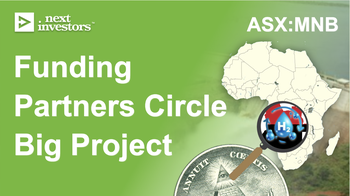
MNB one step closer to first production with $14M from development bank
Oct 17, 2023
Oct 17, 2023 |
12 min
Our 2022 Wise-Owl Pick of the Year, Minbos Resources (ASX:MNB), is looking likely to be the first company in our Portfolio to see a mining project move into production.
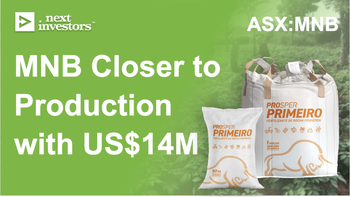
MNB Signs Offtake MoU for 66% of Stage 1 Phosphate Production
Jul 19, 2023
Jul 19, 2023 |
12 min
Our 2022 Wise-Owl Pick of the Year, Minbos Resources (MNB) signs an MoU for the off-take of 66% of its stage-1 phosphate production.
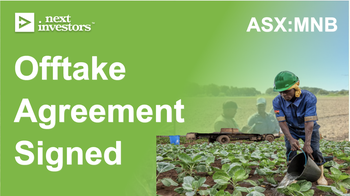
Friday Stock: Production in sight for MNB, offtake "shortly"?
Jun 2, 2023
Jun 2, 2023 |
10 min
It appears to be “go time” for our 2022 Wise-Owl Pick of the Year Minbos Resources (ASX: MNB), we’re talking about actual production - expected to begin before the end of 2023.

MNB pushes ahead with fertiliser project
Jan 29, 2024
Jan 29, 2024 |
2 min
This morning, our fertiliser and green ammonia Investment Minbos Resources (ASX: MNB) set some new guidance on the timeframe for construction of its fertiliser project in Angola.
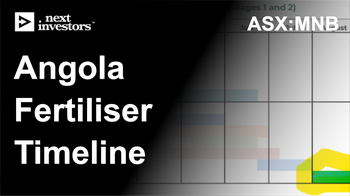
Angola president name drops MNB in address to nation
Oct 20, 2023
Oct 20, 2023 |
2 min
Earlier this week our 2022 Wise-Owl Pick of the Year, Minbos Resources (ASX:MNB), was mentioned in a State of the Union address by the Angolan President.
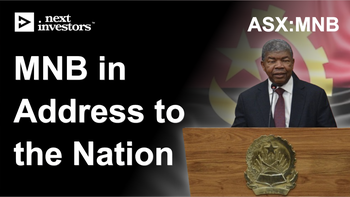
Minbos launches fertiliser brand in Angola
Sep 26, 2023
Sep 26, 2023 |
3 min
Our 2022 Wise-Owl Pick of the Year, Minbos Resources (ASX: MNB), has just launched its brand of fertiliser phosphate - Prosper Primeiro.
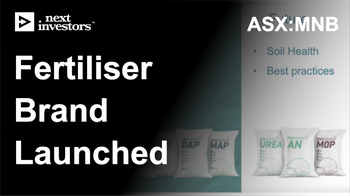
MNB launches concept study for phosphate-base batteries
Sep 5, 2023
Sep 5, 2023 |
3 min
Today our fertiliser and green ammonia Investment, Minbos Resources (ASX: MNB) commenced a concept study to produce P4, also known as Yellow Phosphorous.
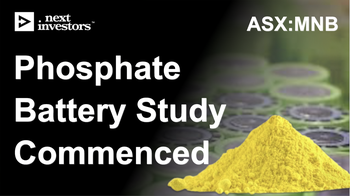
MNB’s fertiliser plant getting closer: EPCM contract signed
Jun 16, 2023
Jun 16, 2023 |
1 min
Today, our African fertiliser and green ammonia Investment, Minbos Resources (ASX:MNB), announced that it has signed an EPCM contract for the construction of the Cabinda Phosphate Fertilizer Plant.
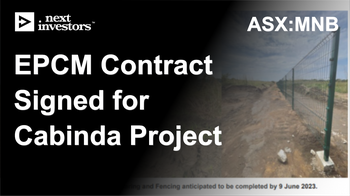
What Happened?
Apr 20, 2024
Apr 20, 2024 |
16 min
The small cap market has been a hive of activity this week.

Our week in Cape Town, South Africa, for the Mining Indaba Conference
Feb 10, 2024
Feb 10, 2024 |
18 min
As everyone descended on Cape Town, South Africa, for the annual Indaba conference you could see why there was mining chatter all around.
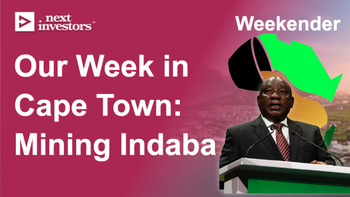
Market Cycles and how we invest
Jul 9, 2023
Jul 9, 2023 |
11 min
In this edition of the Weekender, we discuss the various seasonal stock market cycles we see year around. From selling in May, and tax loss selling in June recently, we look at how the cyclical nature of markets may present new investment opportunities to investors.

The ups and downs of the small cap market
Feb 25, 2023
Feb 25, 2023 |
18 min
Today we cover two stocks that have delivered on their plan so far and that we think are looking to have a great run in 2023, contrasting with two stocks where certain risks have materialised, share prices have suffered and what we plan to do next.

IVZ reaches 10 bagger status, lithium day wrap and more...
Nov 21, 2022
Nov 21, 2022 |
12 min
With a bit of life creeping back into the market, we saw another of our long-term Positions achieve “10 bagger” status this week. A “10 bagger” is when a stock price increases 1,000% - and they don’t come around very often, especially in a wonky market like we’ve experienced in 2022. Holding on for a 1,000% increase usually requires a lot of patience, with plenty of ups and downs along the way that will test one's resolve to hold. That company is our 2020 Energy Pick of The Year Invictus Energy (ASX: IVZ) which released another positive drilling update on Friday.
